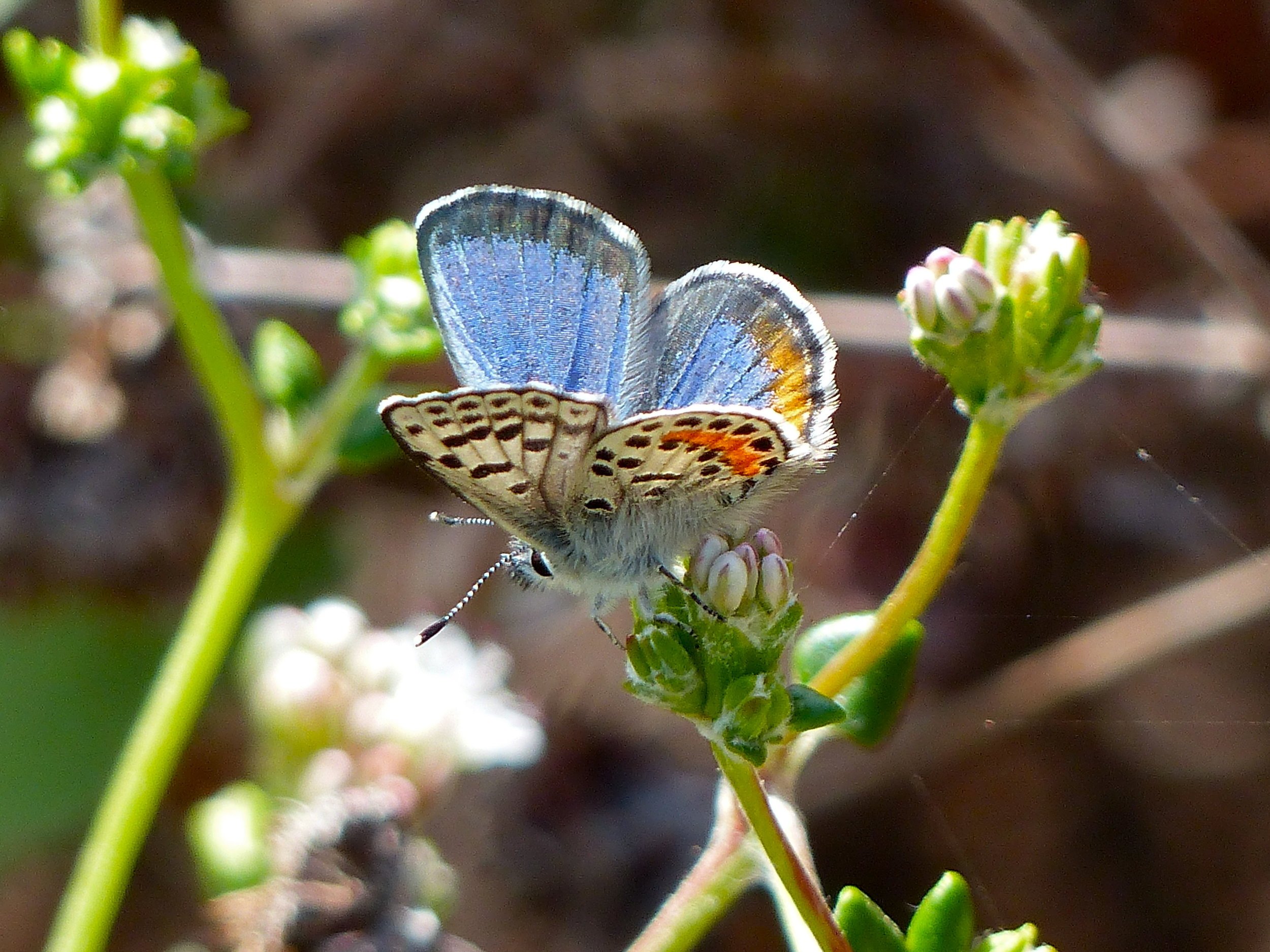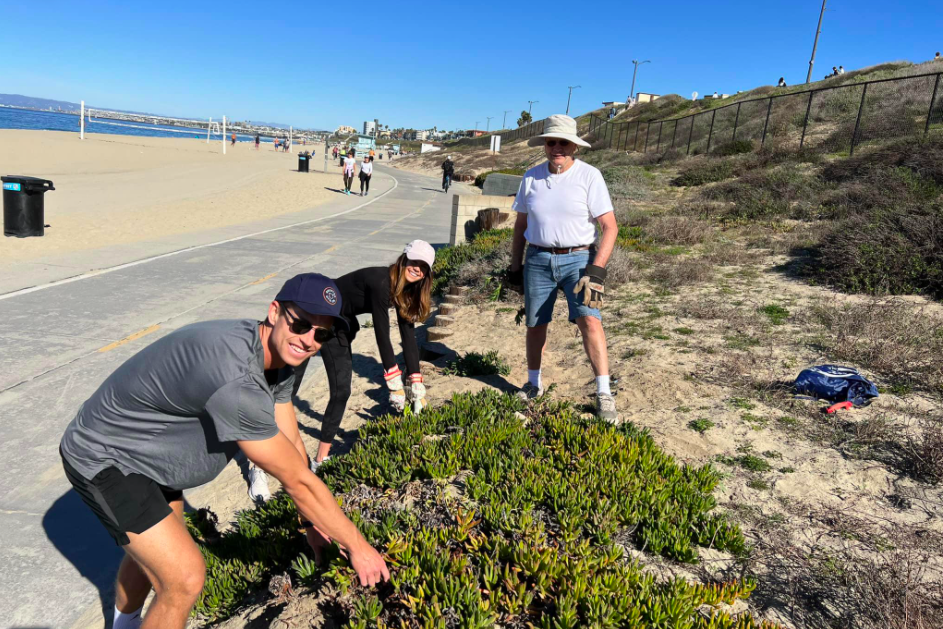Esplanade Bluff Restoration
in partnership with the U.S. Fish and Wildlife ServiceAbout this project
In 2005, the California Coastal Conservancy and Santa Monica Bay Restoration Commission used funds from California Proposition 12 and a grant from the City of Redondo Beach to fund a Master Plan to restore the Esplanade Bluffs to its original native habitat. A primary goal of this plan was to provide an expansion of habitat for the endangered El Segundo Blue Butterfly and provide a critical habitat corridor linking existing colonies of the butterfly between Palos Verdes and Ballona Creek. After the Master Plan was produced, U.S. Fish and Wildlife Service provided funding for the actual restoration work through Los Angeles Conservation Corps (LACC). SBPC provided volunteers for weeding and planting activities in the initial activity which started just north of the beach access stairway at Miramar Park on the southern end of the Esplanade.
The project was abandoned after a few years and within the last two years was funded again by U.S. Fish and Wildlife Service. By this time LACC’s Sea Lab had closed and LACC was unable to focus the same attention on the project. In 2021, U.S. Fish and Wildlife Service requested SBPC take a more active role in the project. SBPC is currently working in areas just south of the Avenue I ramp and is preparing to move to areas just north of the ramp in late 2022 or early 2023. The intent is to provide more frequent planting and maintenance to the finished areas and to expand the project northward.
In parallel, SBPC has teamed up with Keep the Esplanade Beautiful who are planting native plants up Avenue I and into the Riviera Village, which will help link the habitat inland. SBPC’s vision is that we link this essential El Segundo Blue Butterfly Habitat with upcoming projects on the AES site and under the power lines at Herondo Avenue, along the Strand and Greenbelt in Hermosa and Manhattan Beach, the pollinator garden at Alta Vista Elementary School, and the coastal dune habitat we have completed at Wilderness Park.
Some challenges still remain, as the original temporary irrigation system used to establish the young plants was disconnected and when maintenance stopped, non-native ice plant, tumbleweeds, and Sea Rocket started to invade already planted areas.
SBPC needs community volunteers to help us remove these invasive plants, infill plants in the establishing areas, and expand the project northward. We are also seeking funding to augment U.S. Fish and Wildlife Service funding and to reestablish temporary irrigation to help the new plants mature during the drought years.
Sign up to volunteer HERE.
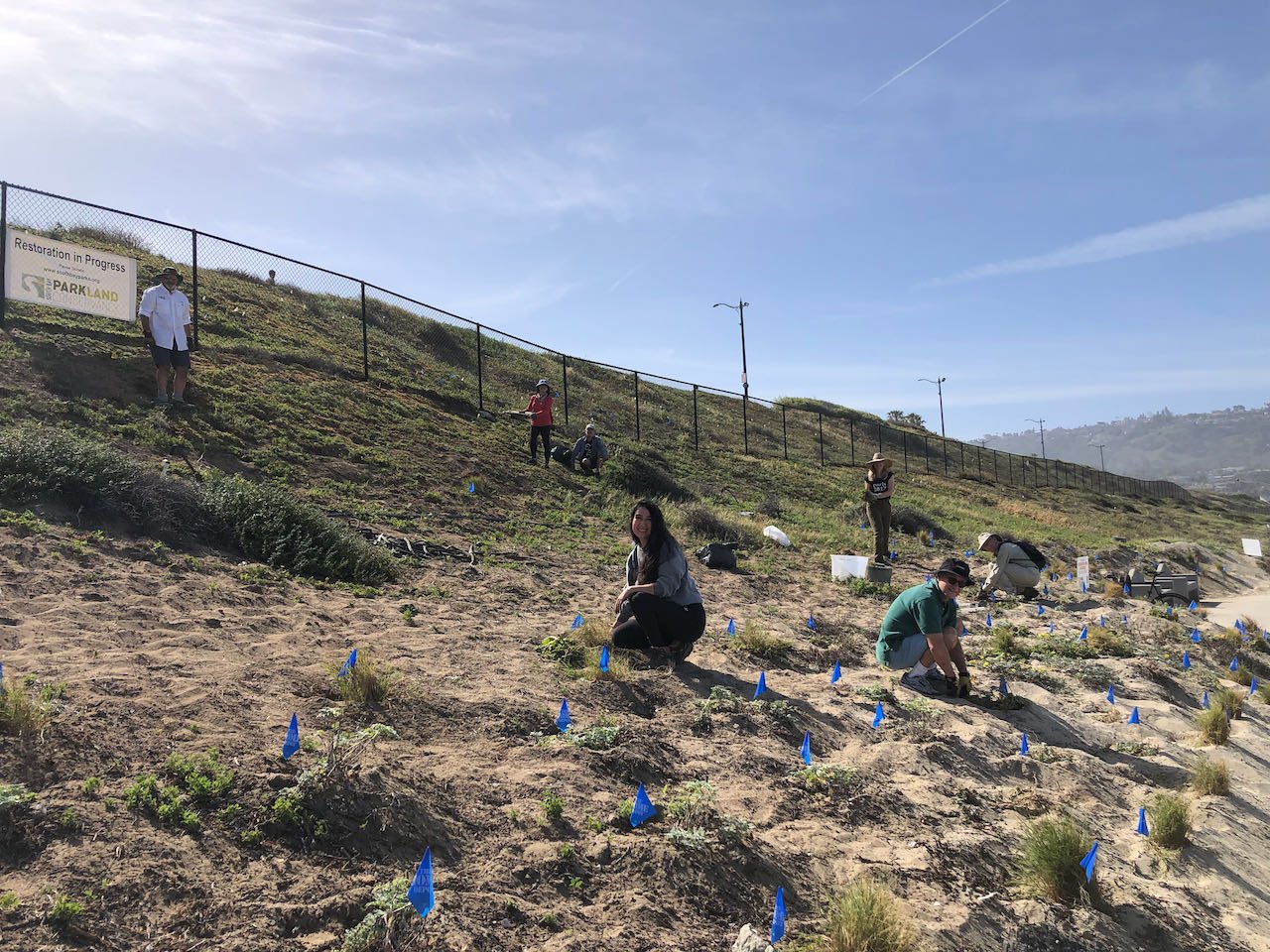

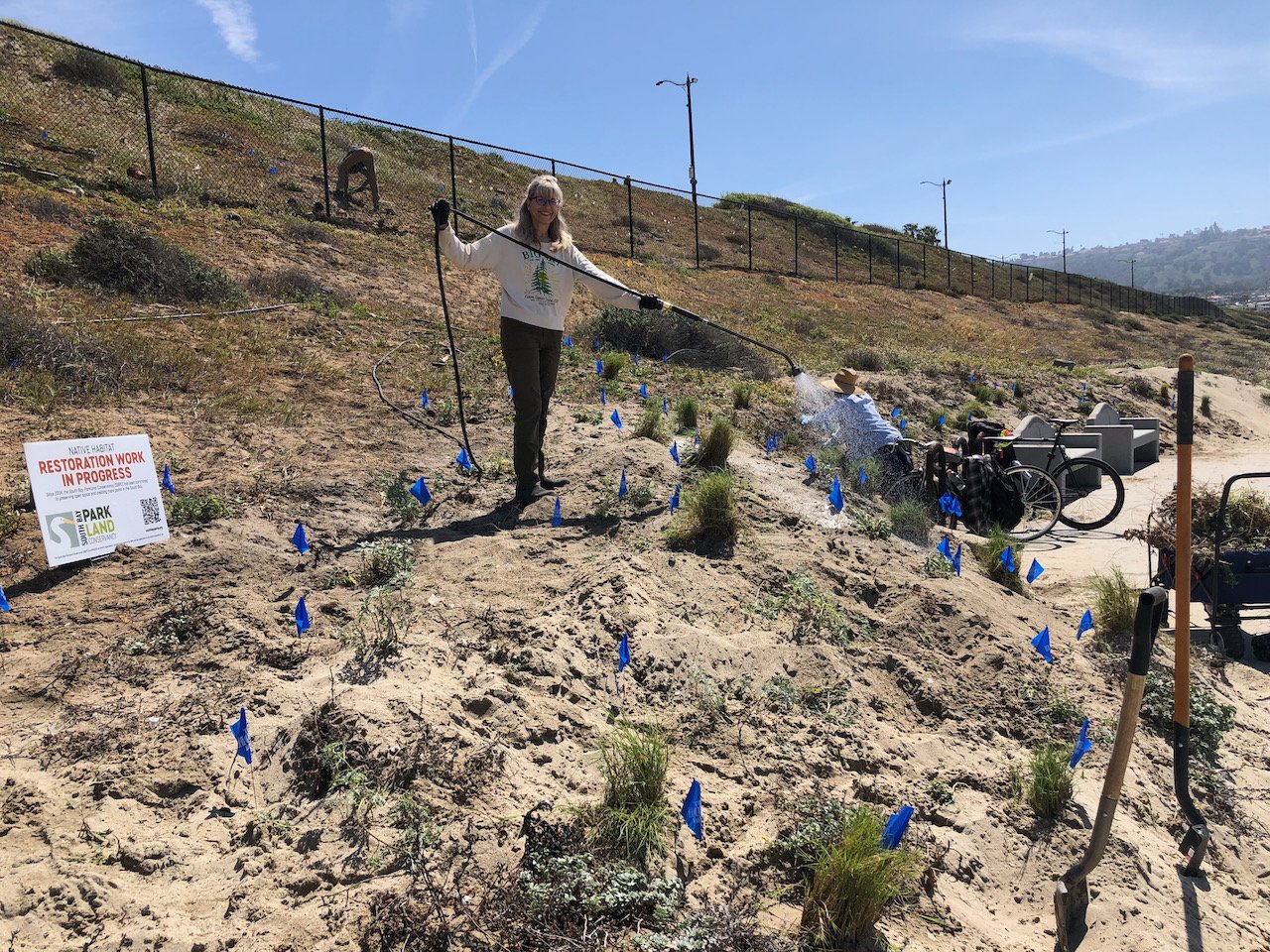
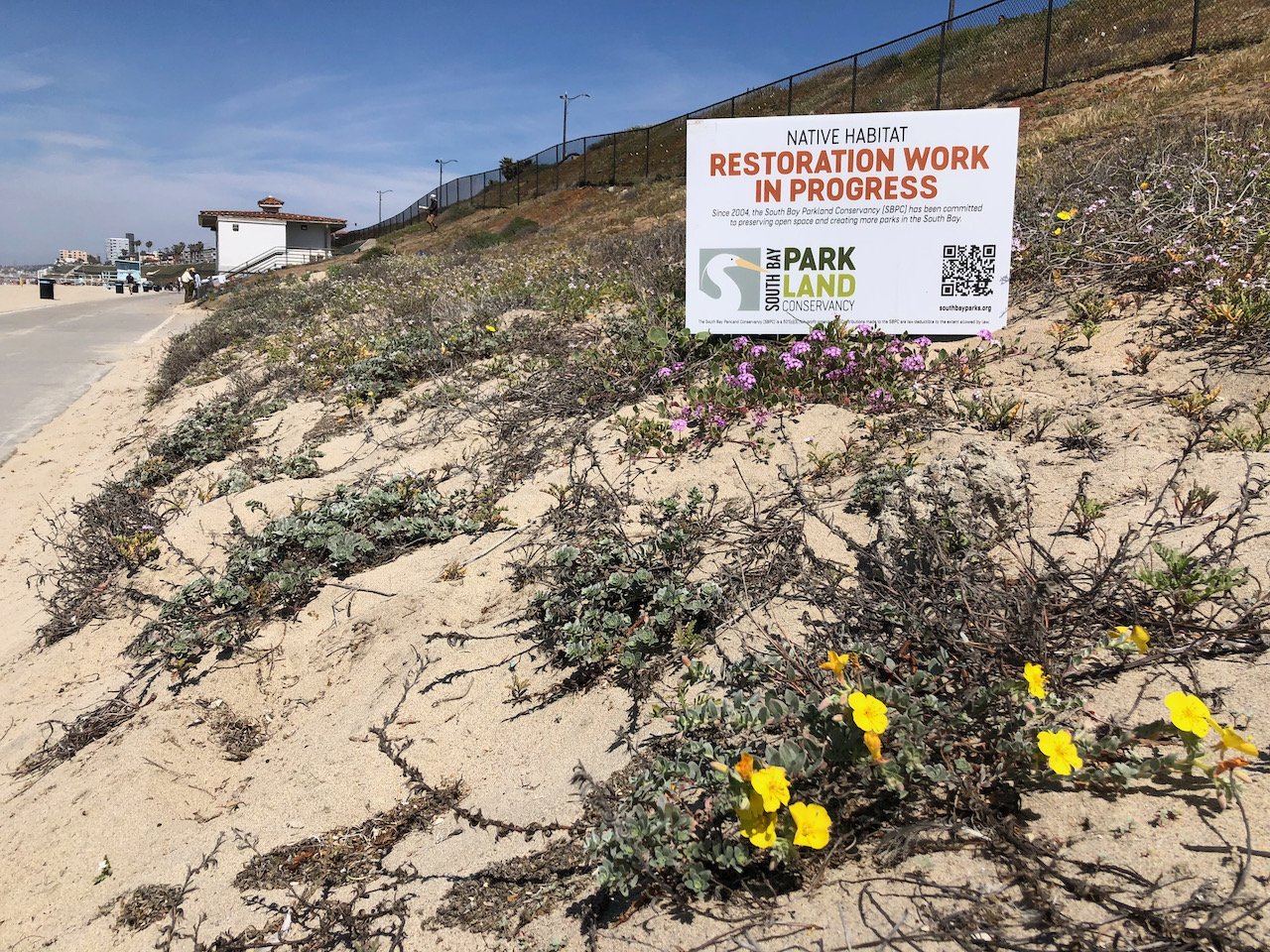
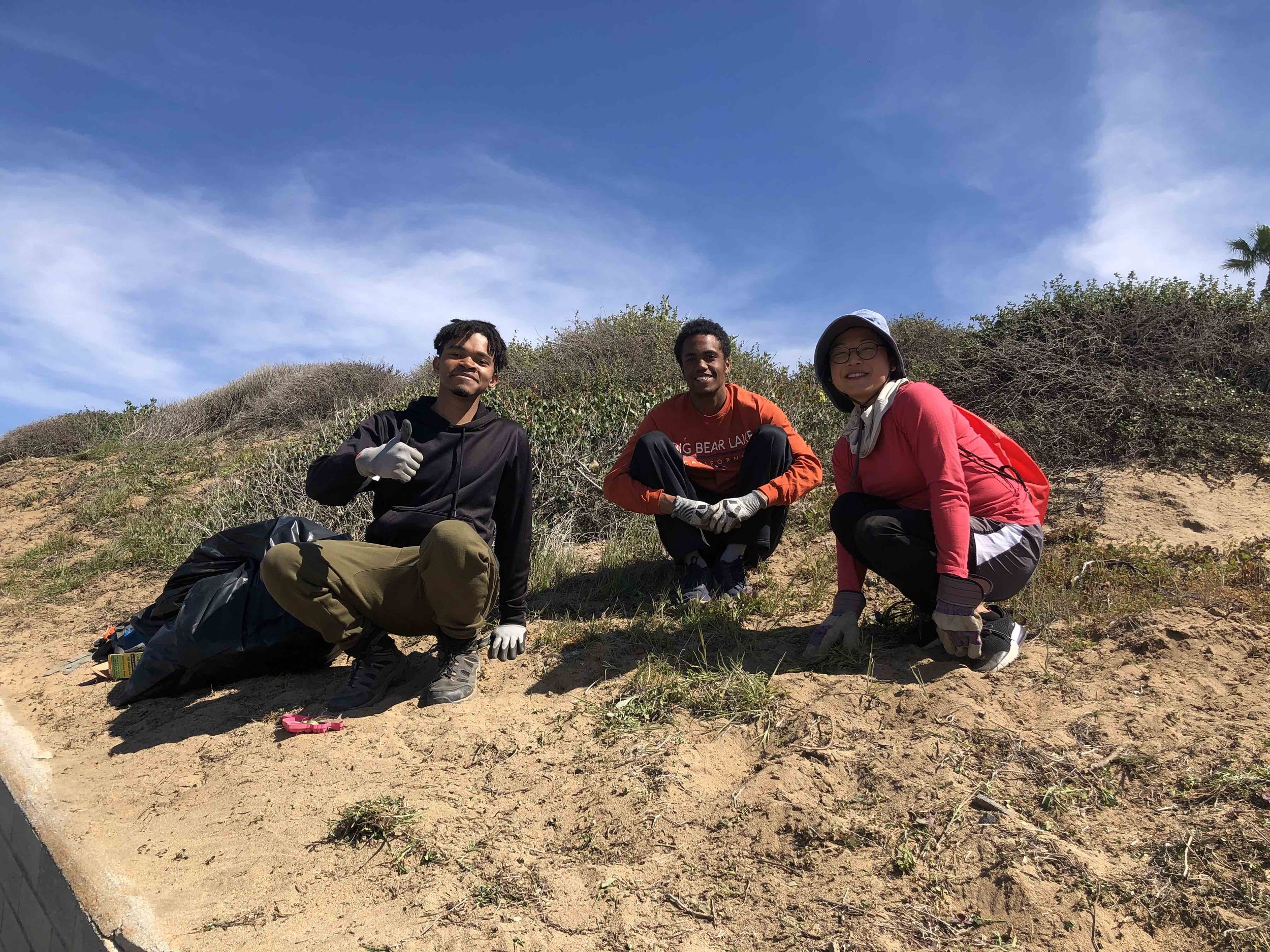
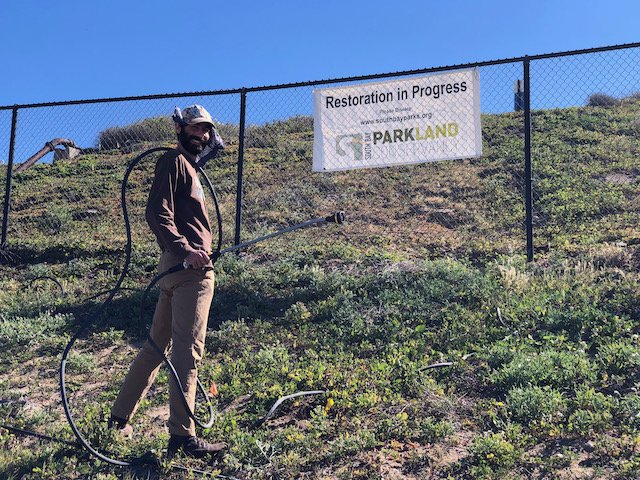
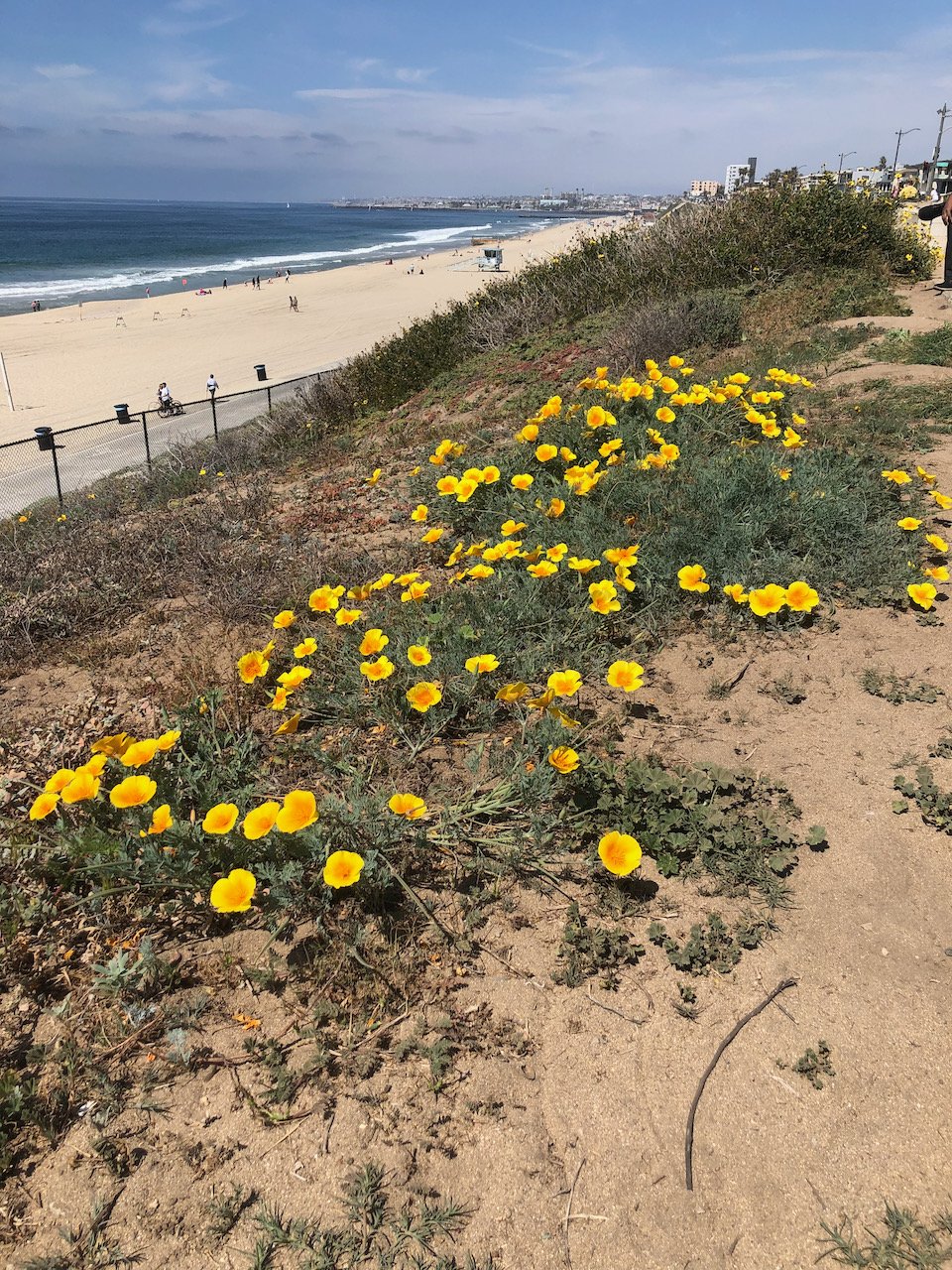
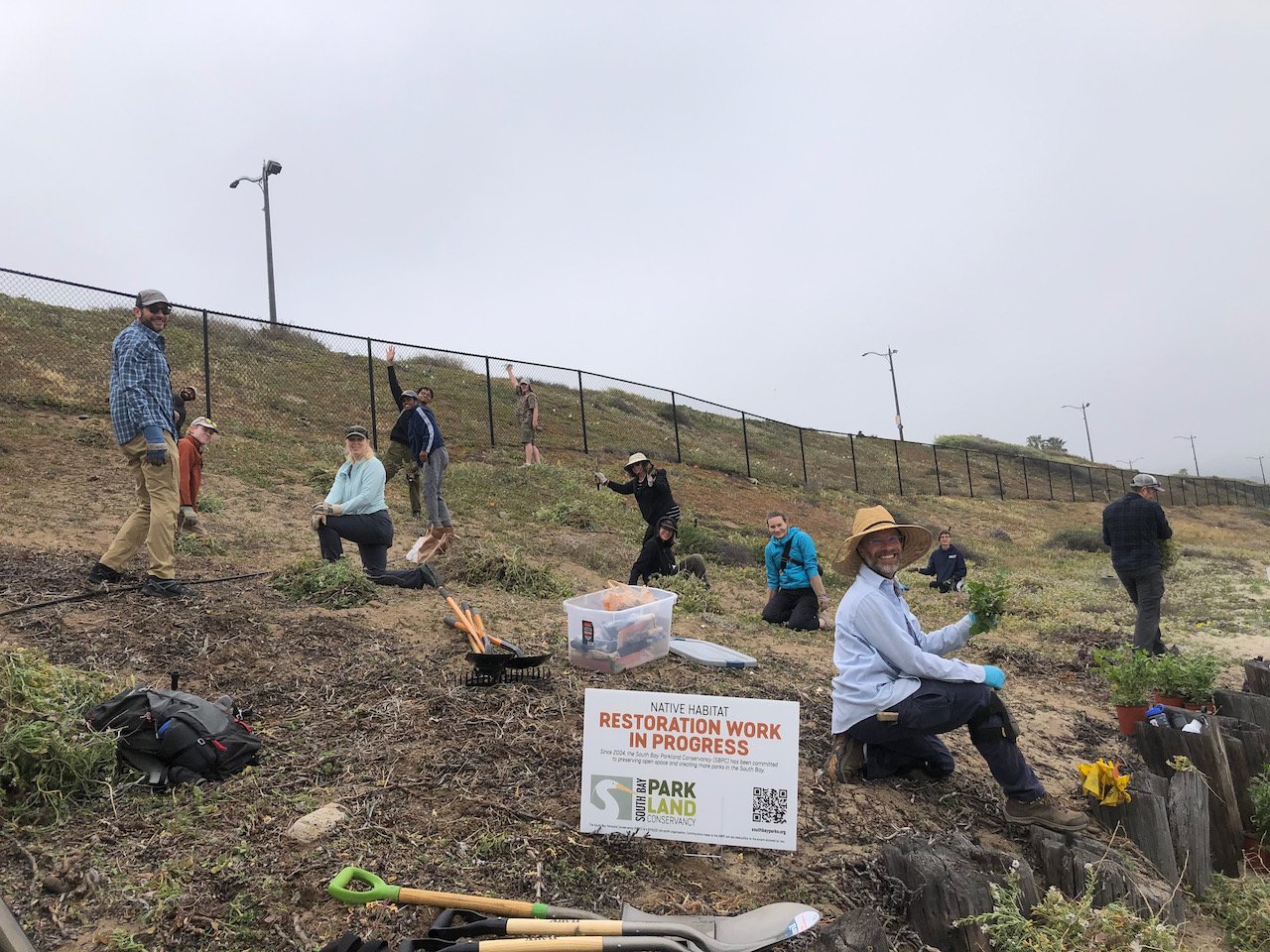
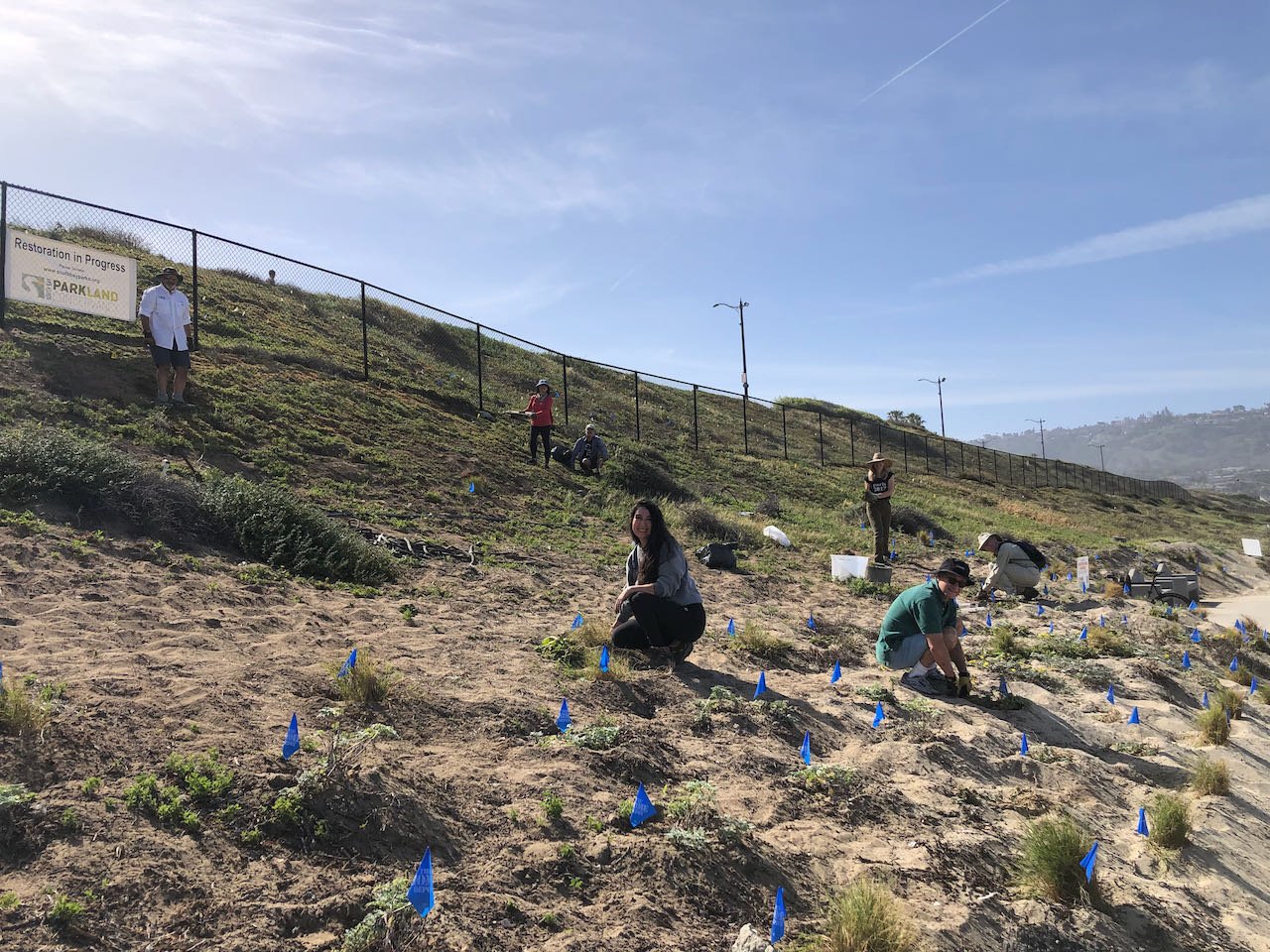
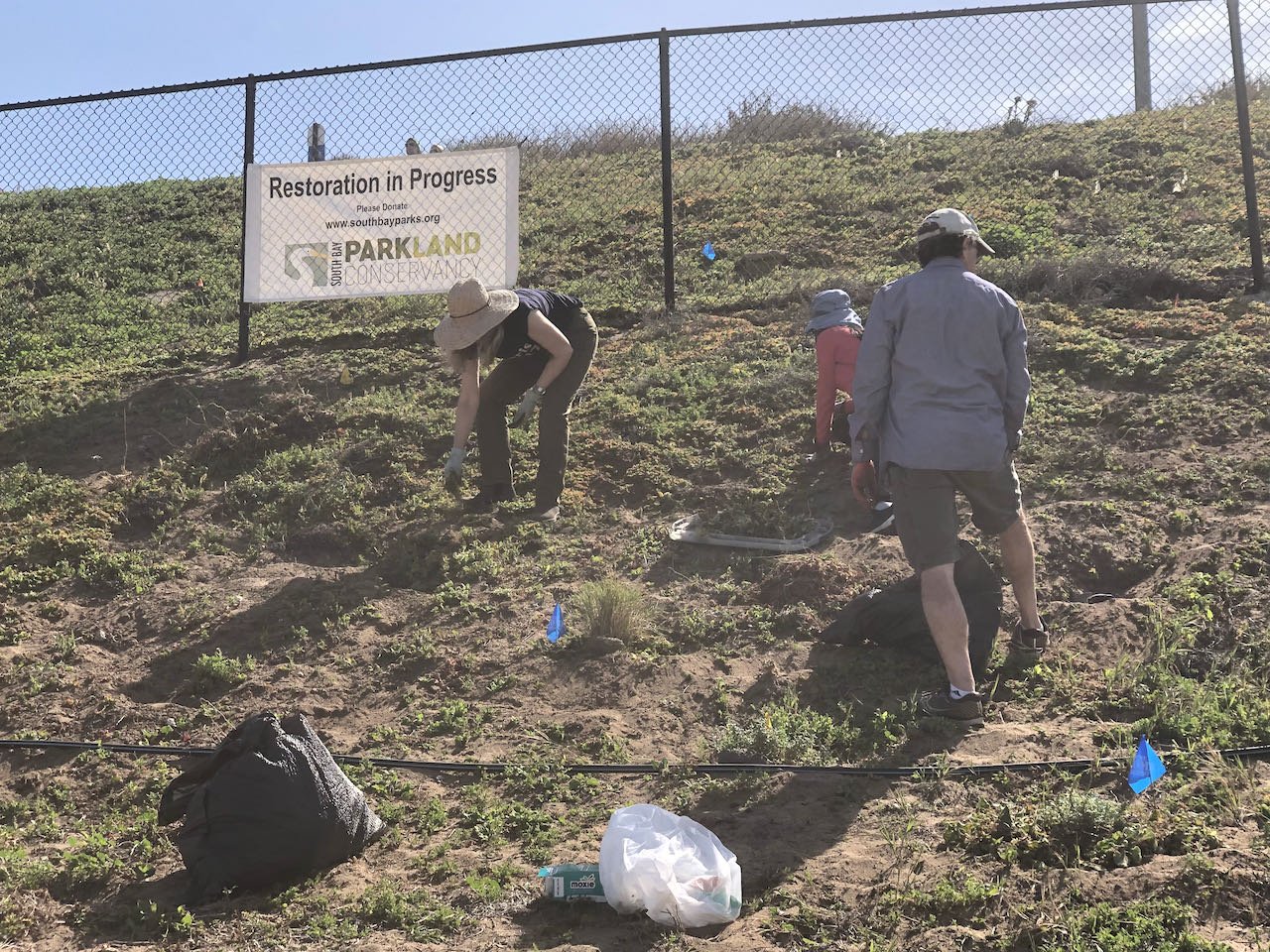

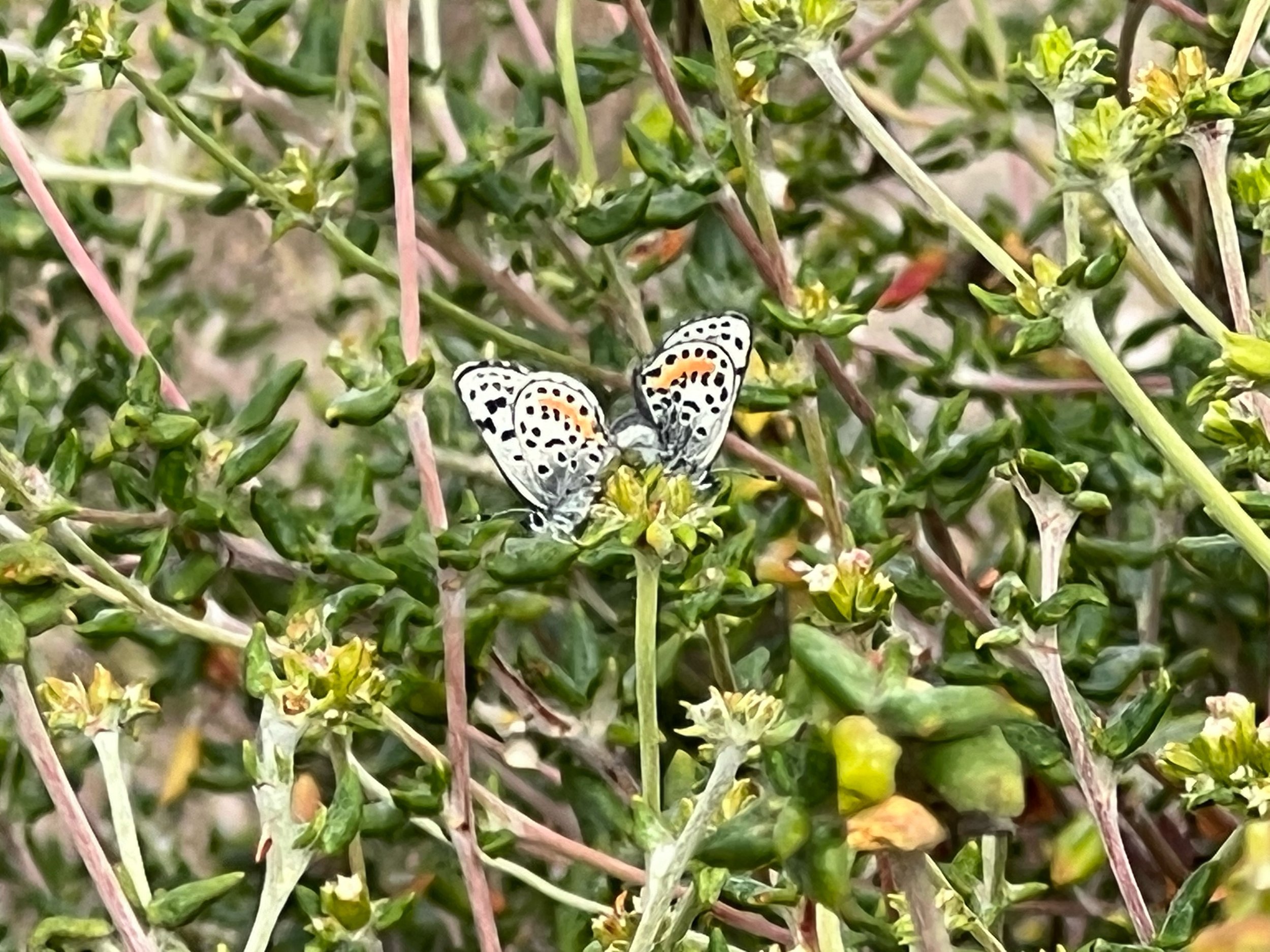

“Thank you for a wonderful day with a great group of locals who want to give back to our beach! It is wonderful sharing time and learning about our delicate eco system with our neighbors! We will continue to volunteer as much as we can! ”
“Living near the Torrance and Redondo beaches the last 25 years has been amazing. Every time we have the opportunity to walk the Esplanade or ride the bike path is a chance to marvel at the absolute beauty of the coastline and freshness of the sea air. Having the chance to repair and beautify the sand dune slopes with their ancient legacy of coastal native plants, and their increasingly rare fauna, has been a gratifying way to repay the favor. I hope to see and be part of this renaissance of nature as a legacy of my own brief visit here.”


